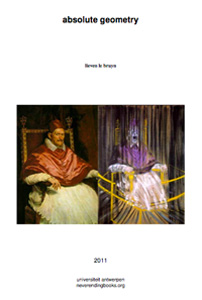From Wikipedia on 24:
“$24$ is the only number whose divisors, namely $1, 2, 3, 4, 6, 8, 12, 24$, are exactly those numbers $n$ for which every invertible element of the commutative ring $\mathbb{Z}/n\mathbb{Z}$ is a square root of $1$. It follows that the multiplicative group $(\mathbb{Z}/24\mathbb{Z})^* = \{ \pm 1, \pm 5, \pm 7, \pm 11 \}$ is isomorphic to the additive group $(\mathbb{Z}/2\mathbb{Z})^3$. This fact plays a role in monstrous moonshine.”
Where did that come from?
In the original “Monstrous Moonshine” paper by John Conway and Simon Norton, section 3 starts with:
“It is a curious fact that the divisors $h$ of $24$ are precisely those numbers $h$ for which $x.y \equiv 1~(mod~h)$ implies $x \equiv y~(mod~h)$.”
and a bit further they even call this fact:
“our ‘defining property of $24$'”.

The proof is pretty straightforward.
We want all $h$ such that every unit in $\mathbb{Z}/h \mathbb{Z}$ has order two.
By the Chinese remainder theorem we only have to check this for prime powers dividing $h$.
$5$ is a unit of order $4$ in $\mathbb{Z}/16 \mathbb{Z}$.
$2$ is a unit of order $6$ in $\mathbb{Z}/ 9 \mathbb{Z}$.
A generator of the cyclic group $(\mathbb{Z}/p\mathbb{Z})^*$ is a unit of order $p-1 > 2$ in $\mathbb{Z}/p \mathbb{Z}$, for any prime number $p \geq 5$.
This only leaves those $h$ dividing $2^3.3=24$.
But, what does it have to do with monstrous moonshine?
Moonshine assigns to elements of the Monster group $\mathbb{M}$ a specific subgroup of $SL_2(\mathbb{Q})$ containing a cofinite congruence subgroup
\[
\Gamma_0(N) = \{ \begin{bmatrix} a & b \\ cN & d \end{bmatrix}~|~a,b,c,d \in \mathbb{Z}, ad-Nbc = 1 \} \]
for some natural number $N = h.n$ where $n$ is the order of the monster-element, $h^2$ divides $N$ and … $h$ is a divisor of $24$.
To begin to understand how the defining property of $24$ is relevant in this, take any strictly positive rational number $M$ and any pair of coprime natural numbers $g < h$ and associate to $M \frac{g}{h}$ the matrix
\[
\alpha_{M\frac{g}{h}} = \begin{bmatrix} M & \frac{g}{h} \\ 0 & 1 \end{bmatrix} \]
We say that $\Gamma_0(N)$ fixes $M \frac{g}{h}$ if we have that
\[
\alpha_{M\frac{g}{h}} \Gamma_0(N) \alpha_{M\frac{g}{h}}^{-1} \subset SL_2(\mathbb{Z}) \]
For those in the know, $M \frac{g}{h}$ stands for the $2$-dimensional integral lattice
\[
\mathbb{Z} (M \vec{e}_1 + \frac{g}{h} \vec{e}_2) \oplus \mathbb{Z} \vec{e}_2 \]
and the condition tells that $\Gamma_0(N)$ preserves this lattice under base-change (right-multiplication).
In “Understanding groups like $\Gamma_0(N)$” Conway describes the groups appearing in monstrous moonshine as preserving specific finite sets of these lattices.
For this, it is crucial to determine all $M\frac{g}{h}$ fixed by $\Gamma_0(N)$.
\[
\alpha_{M\frac{g}{h}}.\begin{bmatrix} 1 & 1 \\ 0 & 1 \end{bmatrix}.\alpha_{M\frac{g}{h}}^{-1} = \begin{bmatrix} 1 & M \\ 0 & 1 \end{bmatrix} \]
so we must have that $M$ is a natural number, or that $M\frac{g}{h}$ is a number-like lattice, in Conway-speak.
\[
\alpha_{M\frac{g}{h}}.\begin{bmatrix} 1 & 0 \\ N & 1 \end{bmatrix}.\alpha_{M\frac{g}{h}}^{-1} = \begin{bmatrix} 1 + \frac{Ng}{Mh} & – \frac{Ng^2}{Mh^2} \\ \frac{N}{M} & 1 – \frac{Ng}{Mh} \end{bmatrix} \]
so $M$ divides $N$, $Mh$ divides $Ng$ and $Mh^2$ divides $Ng^2$. As $g$ and $h$ are coprime it follows that $Mh^2$ must divide $N$.
Now, for an arbitrary element of $\Gamma_0(N)$ we have
\[
\alpha_{M\frac{g}{h}}.\begin{bmatrix} a & b \\ cN & d \end{bmatrix}.\alpha_{M\frac{g}{h}}^{-1} = \begin{bmatrix} a + c \frac{Ng}{Mh} & Mb – c \frac{Ng^2}{Mh^2} – (a-d) \frac{g}{h} \\ c \frac{N}{M} & d – c \frac{Ng}{Mh} \end{bmatrix} \]
and using our divisibility requirements it follows that this matrix belongs to $SL_2(\mathbb{Z})$ if $a-d$ is divisible by $h$, that is if $a \equiv d~(mod~h)$.
We know that $ad-Nbc=1$ and that $h$ divides $N$, so $a.d \equiv 1~(mod~h)$, which implies $a \equiv d~(mod~h)$ if $h$ satisfies the defining property of $24$, that is, if $h$ divides $24$.
Concluding, $\Gamma_0(N)$ preserves exactly those lattices $M\frac{g}{h}$ for which
\[
1~|~M~|~\frac{N}{h^2}~\quad~\text{and}~\quad~h~|~24 \]
A first step towards figuring out the Moonshine Picture.
Leave a Comment






